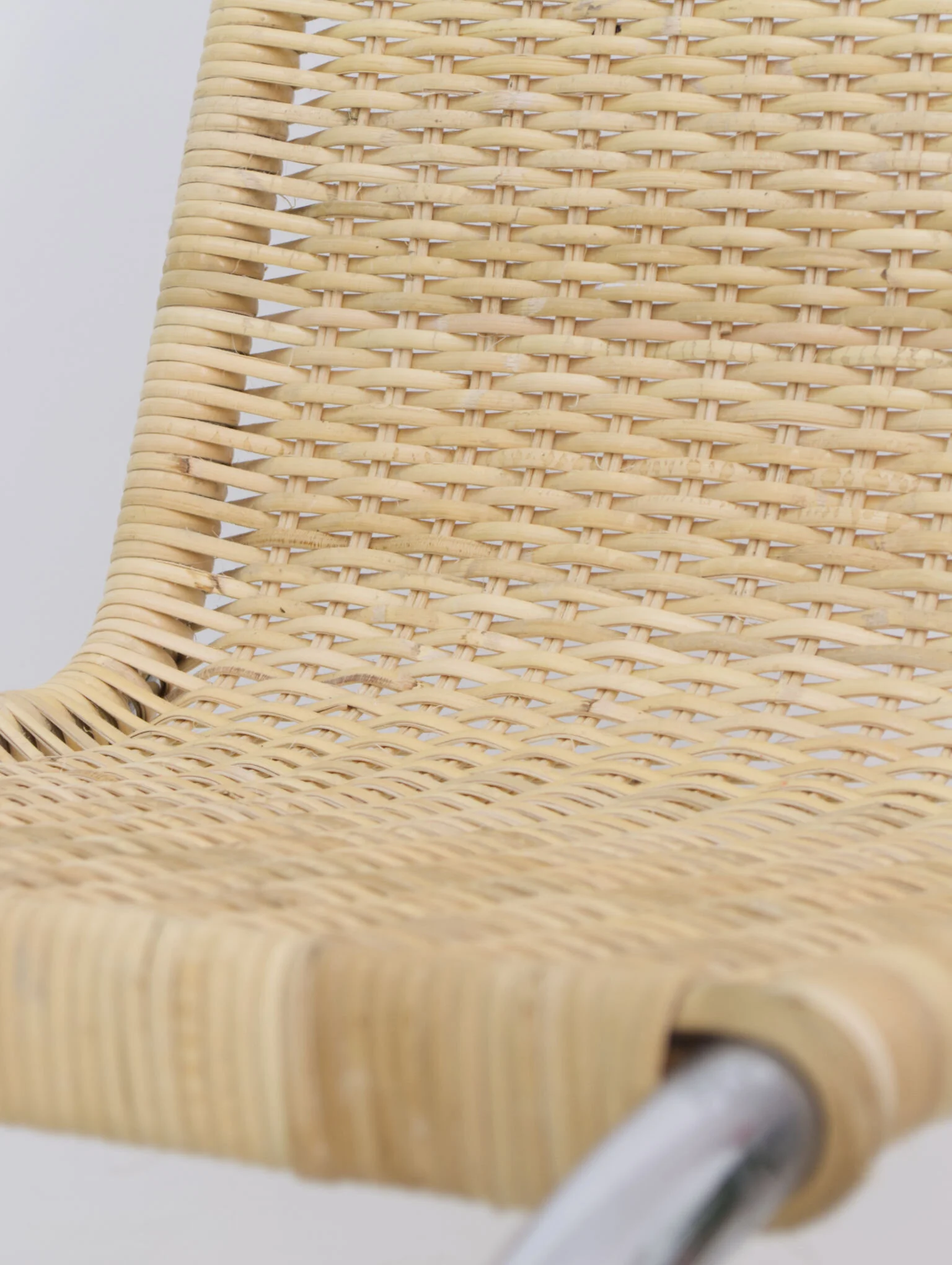 Image 1 of 4
Image 1 of 4

 Image 2 of 4
Image 2 of 4

 Image 3 of 4
Image 3 of 4

 Image 4 of 4
Image 4 of 4





MR10 KNOLL 1977
The four chairs we have here are from the 1977 reissue by Knoll which was in conjunction with MOMA’s exhibition Mies in New York City. This is the first of the four to be restored with new cane and the chrome brought back to life. If you are interested in more than a single chair please get in touch for lead times for restoration.
The four chairs we have here are from the 1977 reissue by Knoll which was in conjunction with MOMA’s exhibition Mies in New York City. This is the first of the four to be restored with new cane and the chrome brought back to life. If you are interested in more than a single chair please get in touch for lead times for restoration.
The MR10 has become an iconic chair often used to illustrate the exemplary times from which it originates. Mies van der Rohe embraced the advances of industrial material production and elegantly exploited its unique characteristics. The MR series of chairs, though iconic, were not the first to employ tubular steel or even a cantilever in chair design. Marcel Breuer first used tubular steel for the Bauhaus canteen at Dessau followed by the skeletal B3 / Wassily armchair. Controversially Mart Stam is said to have brought the idea of a cantilevered tubular steel chair to a meeting at the Bauhaus Werkbund in 1926 and Mies van der Rohe was so taken by the idea that he immediately jumped straight into developing his own version of the concept. Mies was unique in employing, so beautifully, a “continuous form of tubular steel that is like a drawing made in three dimensional space” (Nicholas Fox Weber, The Bauhaus Group) and these continuous lines created a “springiness analogous to the movement of a rocking chair, something entirely new in sitting furniture” (Now Sit Me Down, Witold Rybczynski). First produced in 1927 by Berliner Metallgewrbe, the MR-10 was showcased at the Die Mode der Dame exhibition in Berlin and installed at Mies’s model apartments in Stuttgart. The cane version of the chair came in 1928 after the original leather-slung chairs of the previous year. They were included in the exposition at the Barcelona World's Fair of 1929 where the famous pavilion was installed. Thonet took over production in the early 1930’s and the MR chairs were the most expensive in the catalogue.
